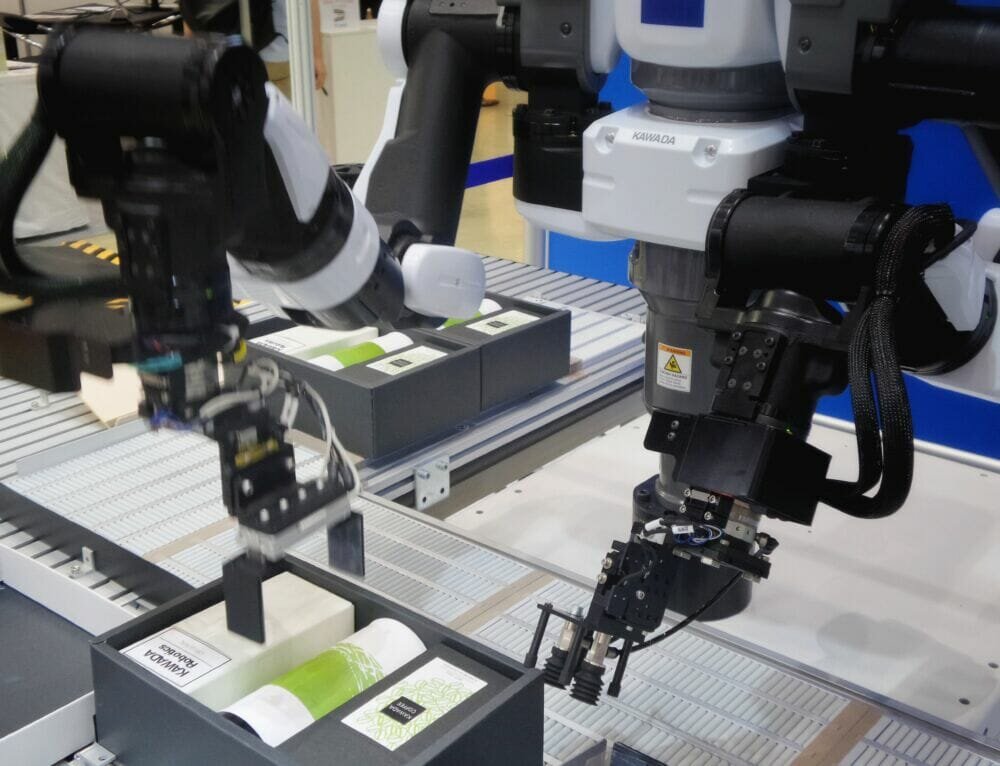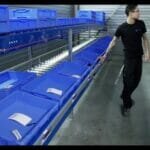A sudden boom in demand provides welcome opportunities for manufacturers to boost their annual sales. However, this also means that factories will have to fulfil an unusual number of orders with the same staff and resources. Here Neil Ballinger, head of EMEA at automation parts supplier EU Automation, explains how automation can help manufacturers deal with spikes in demand.
In sectors such as consumer electronics, textile and food and drink, a seasonal peak in demand is a well-established fact. This creates a much welcome revenue stream for manufacturers, but it can also mean that factories could struggle to meet customers’ expectations.
Temporary workers are often hired to support companies, but this is not always a convenient strategy. On top of their salaries, manufacturers will have to account for the time and cost of training and the extra equipment that seasonal staff will need to perform their duties.
On the other hand, industrial automation can help lighten the workload at peak times, while optimising processes all year round. So, which operations can be automated to help manufacturers manage the workflow more efficiently?
Inbound logistics
Handling incoming goods or raw materials efficiently is key at times of high demand. Automation can help move, inspect and store items safely and hygienically, while preventing operator fatigue and injuries.
Automating even one element of logistics, such as unboxing inbound products, can add tremendous value. For example, the IBOD box opening system by TM Robotics eliminates the necessity to open boxes manually, saving time while preventing incidents due to workers working under pressure with scissors or knives.
Pick and place
Collaborative robots — or cobots — are incredibly quick and easy to set up and can be used in a huge variety of applications to automate repetitive tasks, such as picking and placing items. On top of working safely alongside humans, cobots can be easily moved around the factory floor, meaning the same machine could be used at an assembly station in the morning, and moved to packaging in the afternoon.
Cobots also come at an attractive price compared to bulkier robotics solutions. For example, Universal Robotics’ UR5, one of the most popular cobots on the market, is usually sold for 35k USD and can be set up by operators with no programming experience.
Packaging
Packaging can be very time-consuming and automating even one step of it — such as boxing, or labelling — can save time and money. This will give personnel the chance to focus on more complex tasks that require problem-solving skills, increasing capacity across the production chain.
For example, the Sewtec case closer can close up to 30 cases per minute with different closure types. The machine is also optimised to handle delicate products gently and guarantee smooth transition between one case and the other. This can save your employees valuable time while preventing injuries from lifting heavy items.
Quality inspection
There’s no greater waste of time than doing the same job twice. Re-working costs due to production defects extend lead times and are a massive source of lost revenue. Plus, defective products erode customers’ trust and damage your reputation.
Manual inspection is not a reliable quality assurance method, especially for complex products like electronic components. Machine vision systems can help automate quality inspection and can be quick and easy to set up. For example, the S70 by Inspekto is an off-the-shelf machine vision system that can be set up in a very short time without the help of a third-party expert.
Smart digital solutions that automate common and repetitive tasks can be a lifesaver for manufacturers during a seasonal rush. However, investing in automation will be a long-lasting investment that will maximise productivity all year round.
To discover a wide range of industrial automation components, such as control systems, motors, HMIs and more, visit www.euautomation.com.





